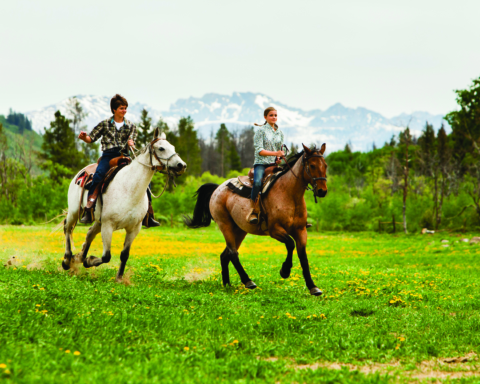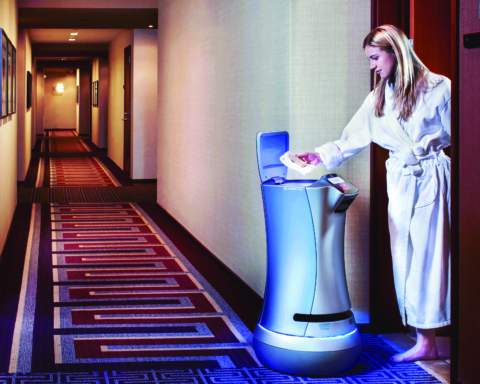Vacationing in Cuba could soon become a reality. Here’s what Americans need to know.
By Thomas Forrister and Angela Youngman
Amysterious country that has been closed to Americans for over 50 years could soon be open for travel. In a historic move, President Barack Obama has opened diplomatic relations and begun loosening travel sanctions for Americans visiting Cuba.
What’s more, the U.S. Department of Transportation recently awarded six domestic airlines to begin scheduled air service to Cuba from five U.S. cities. While service to Havana is currently off limits, Cuba’s nine international airports in other cities will be open for business. Most authorized airlines plan to begin their services in the fall and winter of 2016 and 2017, with tickets likely available much sooner.
But don’t rush to buy a plane ticket – you could find yourself prevented from boarding the plane. You need permission from the U.S. and Cuba to travel. Each approved airline must follow the laws and regulations still in place regarding travel from the U.S. to Cuba. Always check with the carrier directly if you’re thinking of buying a ticket. The six approved carriers are: American Airlines, Frontier Airlines, JetBlue Airways, Silver Airways, Southwest Airlines and Sun Country Airlines. So far, travelers will be able to fly to one of Cuba’s nine approved airports from Miami, Fort Lauderdale, Chicago, Minneapolis/St. Paul and Philadelphia. 90 daily round trips are approved, with more to come if Havana flights are later allowed. The decision on flights to Havana will be announced later this summer.
So, what are the travel limitations, and how should you navigate them? General tourism to Cuba is strictly prohibited; and travel is limited to specific categories with individual and group tourism still banned. The outcome of the next presidential election may determine how fast this situation changes – whether travel restrictions will continue to loosen, or whether the airline services will cease due to the current non-legally binding arrangement.
Currently, travel is limited to 12 categories, including religious, educational, journalistic or cultural visits. Family visits for Cuban Americans are easier to arrange, but you have to use agencies approved by the U.S. Treasury. Every U.S. citizen needs a visa to enter Cuba. Bringing back $400 worth of Cuban goods is allowed as long as it is for personal use, with just $100 accounting for alcohol and tobacco. Travelers from the U.S. should also pay in cash for expenses while on the island, using the Cuban peso– while U.S. debit and credit cards are legal, they do not yet function in Cuba. Visitors must also keep records and travel receipts for up to five years after returning home.
Despite all of the restrictions, many Americans are optimistic. A U.S. traveler to Cuba no longer needs a specialized license from the government to go, as long as the traveler fits one of the 12 categories – one only needs a general license, which is not a piece of paper, but more or less an honor-based presumption. And with a wide array of categories, travelers are happy to schedule educational and cultural excursions – meeting with Cuban people, visiting historic museums and exhibitions – as main events in their itineraries. However, it is still tricky to travel to Cuba as an individual, so your best option for traveling legally is to go as part of a small guided trip tailored to your interests – authorized travel agencies can help you navigate the limitations smoothly and arrange people-to-people interactions so that you need only relax and enjoy your stay.
So what can you expect to find when visiting Cuba? This is a land that to some extent is still in a time warp. The pace of life is much slower. Technology and property development have only just begun to affect the Cuban landscape. You can take private tours of Havana in a 1950s Chevy without feeling out of place.
Only 90 miles from Miami, Cuba was once the playground for the rich and famous, and U.S. citizens swarmed to the island. Organized crime even set its sights on the casinos and hotels, with the likes of leading mob bosses Meyer Lansky and Lucky Luciano. Havana was a haven for mobsters under the Batista regime, which profited from the extensive fees the crime lords paid for the privilege of running casinos. The American Mafia’s infamous Havana Conference in 1946 ran under the cover of a gala party with singer Frank Sinatra as its entertainment. Others in attendance included Sam Giancana, Albert “The Mad Hatter” Anastasia, Carlos Marcello and the Fischetti brothers, who delivered a suitcase containing $2 million in cash to Luciano.
In 1959, when then Prime Minister Fidel Castro gained power, Castro abolished gambling in Cuba and sent the Mafia scrambling.
Now, among other possibilities should the U.S. and Cuba relations succeed, Cuba could see a return to U.S. executive-owned casinos – all legal, of course!
“The most beautiful land human eyes have ever seen,” is how Christopher Columbus described Cuba when landing on its shores for the first time in 1492. Little has changed since then. Many of the beaches and mountainous, forested interiors would be instantly recognizable. This is a land of incredible beauty, of crystal clear waters and sun-drenched beaches, of massive green rivers winding through forests to quiet beaches covered in sand of every color from pale pink to sparkling black. This is a tropical paradise perfect for romantic celebrations, relaxing vacations, as well as adventurous exploration.
Cuba is a land of contrasts, from the tropical rain forest of the Sagua-Barocoa Mountains to the Zapata Peninsula, which is the largest wetland in the Antilles. The Cays house the second-largest coral reef in the world, and at Cayo Largo del Sur, one of the most stunning sights of the natural world can be seen when hundreds of turtles come ashore to lay their eggs. There are miles of shimmering beaches protected by coral reefs.
At night, the historic cities and towns of Cuba come alive with music and dance. There are clubs, cabarets and street side salsas. Cuba’s capital city, Havana, is the largest city in the Caribbean, possessing a stunning historic neighborhood of Vieja Habana complete with castles, cathedrals and mansions. Numerous resorts can be found mainly within the Varadero, Jardines del Rey and Herradua Keys areas. Most hotels are owned by the Cuban government, or by overseas businesses such as Spanish resort groups.
Located on a long narrow peninsula stretching out into the Caribbean, Varadero has been attracting visitors (including Al Capone!) since the 1870s. The soft, white sandy beaches are fringed with palm trees, and the azure blue sea perfect for scuba diving into stalagmite caves.
Royal Service Paradisus Varadero is one of the most luxurious hotels in the area. The stylish Hispanic architecture has its own special charm, with its canopy-edged beds and cream-and-brown décor with subtle splashes of color creating an oasis of tranquility. Choose the Royal Service option for the services of a personal butler and a private pool. When dining, guests are spoiled for choice since the restaurants cook up a plethora of a la carte cuisines from Cuban to Italian, Mexican to Japanese.
Sited directly opposite the expansive Varadero beach, the Iberostar Varadero is characterized by low-slung, tropical Cuban-styled buildings. The bright sunny interior décor in yellows, apricots and terracottas reflect the lively Caribbean style. Take a dance class; try your skills at archery, horseback riding, waterskiing or golf. Dine a la carte on gourmet food, sample Cuban delicacies, sushi, burgers or dishes from around the world. At night, enjoy the music of live bands, dance in the disco or enjoy a spectacular show
or two.
Over on Cuba’s North Coast, the Jardines del Rey archipelago is the site of the Meliá Buenavista. An eco-friendly, adults-only resort, it offers total luxury, impeccable service and exclusivity. Even the three beaches are exclusive to the resort. Each elegant suite is set within pretty, two story bungalows built on stilts with views over the beach, garden or pools. Paintings and prints by prestigious Cuban artist, Zaida del Rio, adorn the walls of the Hispanic-styled buildings.
The crystalline waters and sparkling white beach of the Cayo Ensenachos, part of the Herradua Keys, are among the most beautiful in Cuba. These are quiet, uncrowded beaches surrounded by stunning scenery. Iberostar Ensenachos is a luxury resort built in a colonial style of architecture. The welcoming, sophisticated décor is beautifully cool and fresh with hints of blue and green enhancing the predominant white and cream. Balconies and terraces provide views across the gardens and sea. As dusk draws in, the charming pool area with its grand staircases becomes a fairytale setting, perfect for a romantic evening.
Take a trip from Cayo Ensenachos to discover the other Cuban Keys. Roads link the network of islands, allowing visitors to explore the forests and hidden beaches. Swim with dolphins at Cayo Santa Maria, go sailing, or relax with a camchánchara made from eau-de-vie, honey, lemon and mint at La Estrella.
A paradise island, Cuba is a perfect destination for relaxation and fun, where sports and exploration on land and sea offer superb experiences for everyone – once the restrictions are fully lifted!








